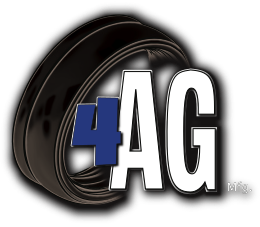No-till Farming Whereabouts – A Quick Round up
There is nothing new about no-till planting. As far back as 10,000 years ago, it was used. But during the European Agricultural Revolution in the 18th and early 19th centuries, as plough designs and production methods improved, tilling became increasingly popular. The method was adopted by farmers because it permitted them to plant more seeds while investing less effort.
Until planting new crops, tilling requires digging and exploring the first 10 inches of soil. This method works deep into the field with surface crop residues, mixing them into the soil. It aerates and warms the soil as well. That sounds like a positive thing huh? Tilling, sadly, does more damage than good in the long run. Here's the reason.
Tillage loosens and eliminates any soil-covering plant matter, leaving it bare. Bare soil is more likely to be eroded by wind and water. Think like this: the undisturbed soil looks like a sponge, kept together by a complex network of various particles of the soil and channels formed by the roots and organisms of the soil. Its structure becomes less capable of absorbing and infiltrating water and nutrients when the soil is disturbed by tilling.
Tilling often displaces and/or kills the millions of microbes and insects that shape the biology of healthy soils. Using deep tillage in the long term will turn healthy soil into a lifeless growing medium based on chemical productivity inputs.
Lack or Partial Tillage
Special equipment is necessary for the no-till method of agriculture to make furrows, firm them and cover them (unlike double-passing the field after plowing). The soil suffers from minimal disruption in this way, since it is dug precisely where the seed is intended to fall. Furthermore, planters use less fertilizer and apply them right into the furrow through designated tubes.
Sometimes if high yields produce a lot of manure and it composts poorly, causing diseases or interfering with planting operations, no-till planting requires slight or narrow tilling between the seasons. In order to balance the acidity, another scenario is lime incorporation.
Cover Using Straw
Weed control is a major problem in no-till cultivation because it is not possible to manually kill weeds. Agriculturists cover inter-rows with grass, dry hay, or mulches to solve the problem. Owing to the lack of light, it not only helps to kill weeds but also accumulates moisture and protects plant roots from the burning sun.
Rotation of Crop
A successful agricultural technique with several advantages is crop rotation. It assists in the following problems as a no-till form of farming:
Weed infestations and insect invasions, since there are various pest and weed threats to different types of crops;
Soil degradation as there are numerous roots in alternative plants;
Soil fertility due to the nitrogen release property of legumes.
Crop tracking is an online tool for agriculture that makes crop rotation decisions and implementations of no-till farming in particular much simpler. It allows for detailed real-time tracking and analysis of the vegetation states, as well as the last five years. Taking into account the weather conditions over many years, together with data on vegetation indices, farmers may choose the most appropriate crop for the particular climatic needs of each plant. Simply placed, for a specific area, they may opt for the most suitable crop.
Advantages of No-Till
Only one of the benefits of no-till planting is preserving soil quality. It competes with alternative practices which also flaunt other merits.
The main advantages of no-till agriculture include, among others:
To plough the entire field, savings on tillage equipment are required. Modern machines instead allow sowing directly on the strips filled with residue. In addition, in this way, plants can get nutrients from the decomposed matter.
Restricted input of fossil fuels for field operations.
Shortened time for operations. Sophisticated seeders do the job faster and complete it in one-field pass.
Human labor for tilling operations and repair of tillage machines was avoided.
Conserved moisture and reduced water expenditure as a result of slow evaporation and low cracking.
Eliminated leakage of herbicides due to less frequent irrigation.
Ask us at 4ag Manufacturing for more detail. We are proud manufacturers of tires for farming purposes. See us for your needs.


